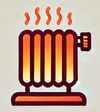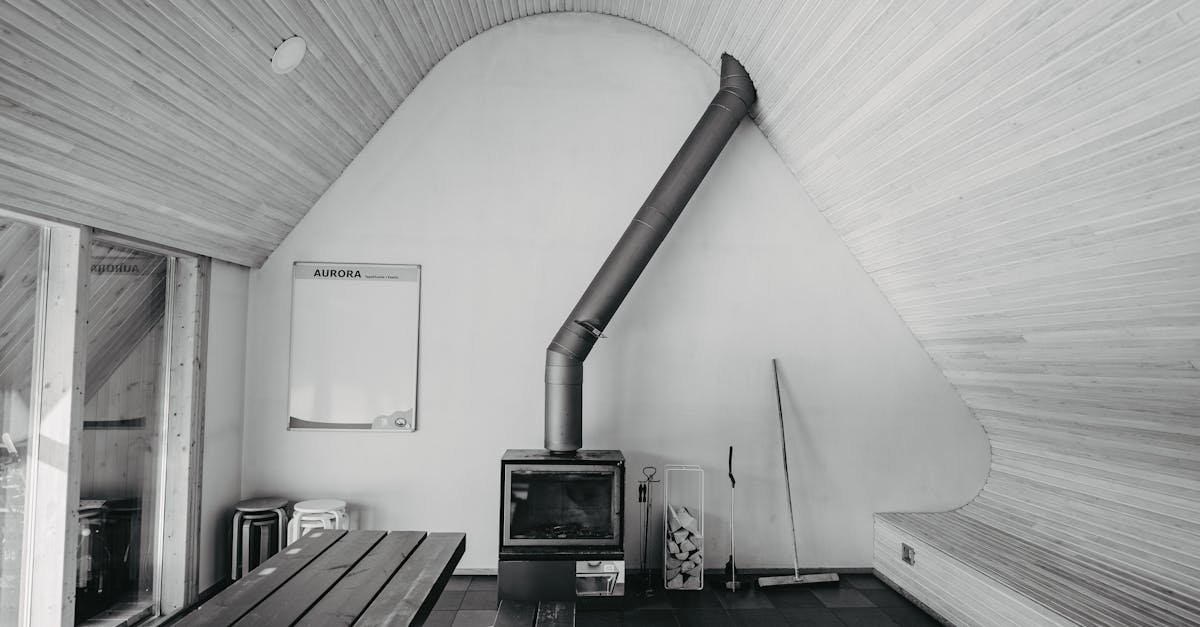Bleeding your radiator is essential for maintaining efficient heating in your home. It removes trapped air that can cause cold spots and reduce warmth. To do this, you’ll need a radiator key or a flathead screwdriver, a cloth, and a container to catch any water.
Start by turning off your heating system and letting the radiators cool down. Then, locate the bleed valve at the top of each radiator. Turn the valve counterclockwise until you hear a hissing sound, which indicates air is escaping. Once water starts to flow steadily, close the valve by turning it clockwise. This simple process can help ensure your heating system runs smoothly and keeps your space cozy all winter long.
Understanding Radiator Bleeding
Radiator bleeding removes trapped air from your heating system. This air can build up, making it hard for hot water to circulate through your radiators. When you bleed your radiators, you let the air escape. This process helps your heating system work better, ensuring warm air fills every corner of your home.
Radiators need bleeding because air enters the system in different ways. Water heats and cools, releasing dissolved gases. In older systems, air might enter through small leaks or during maintenance. Since air is lighter than water, it rises to the top of radiators, creating cold spots. These cold areas can reduce your heating efficiency.
Signs your radiator might need bleeding include:
- Cold spots at the top while the bottom stays warm.
- Radiators taking longer than usual to heat up.
Recognizing these signs can prevent further issues with your heating system. Regular maintenance, including bleeding your radiators, keeps your home warm and comfortable.
Importance of Bleeding Your Radiator
Bleeding your radiator ensures your heating system works efficiently. It helps maintain comfort in your home and lowers energy bills.
Signs You Need to Bleed Your Radiator
- Cold Spots: If the top of your radiator feels cold while the bottom is warm, trapped air is preventing hot water from reaching the upper part.
- Longer Heating Times: If your radiators take longer to heat up, it could indicate air accumulation. More time means less efficiency.
- Noisy Radiators: Gurgling or banging sounds often signal air trapped in the system, disrupting water flow.
- Improved Efficiency: Bleeding your radiator helps air escape, allowing hot water to circulate freely. This boosts overall heating efficiency.
- Energy Savings: A well-maintained system uses less energy. Improved heat distribution means lower energy bills each month.
- Even Heat Distribution: Regularly bleeding your radiators promotes uniform warmth throughout your home, enhancing comfort in every room.
Maintaining your radiator not only extends its life but also creates a cozy environment, especially in winter. Regular checks and bleeding keep your heating system running smoothly.
Step-by-Step Radiator Bleeding Guide
Bleeding your radiator is straightforward. Follow these steps to ensure your radiator operates efficiently.
Tools and Materials Required
To bleed a radiator, gather these tools and materials:
- Radiator Bleed Key: Needed for most radiator valves. A flat-head screwdriver works for some models[2][4][5].
- Container: Use a small bowl or jug to catch any leaking water[2][4][5].
- Towel or Cloth: Protect the floor from spills by placing an old towel underneath[2][4][5].
- Protective Gloves: Always wear gloves to safeguard against hot water[1].
- Optional: A flashlight can help you locate the bleed valve if visibility is poor[1].
Safety Precautions
Prioritize safety before you begin. Follow these precautions:
- Turn Off the Central Heating System: Always shut down the system to avoid burns from hot water. Wait until radiators feel cool to the touch[3][4][5].
- Protect Yourself and Your Space: Wear gloves and lay down towels. This helps catch any water that may spill[2][4][5].
The Bleeding Process Explained
Follow these straightforward steps to bleed your radiator:
- Locate the Bleed Valve: Find the valve at the top of the radiator.
- Insert the Key or Screwdriver: Place the bleed key or screwdriver into the valve.
- Turn Counterclockwise: Slowly turn the key or screwdriver until you hear a hissing sound. This indicates air escaping.
- Allow Water to Flow: Let the trapped air escape until water flows steadily from the valve. This usually takes a few seconds.
- Close the Valve: Turn the key or screwdriver clockwise to close the valve tightly.
- Check Other Radiators: If needed, repeat the process for other radiators in your home.
By following these steps, you ensure efficient heating throughout your space. Proper maintenance enhances comfort and energy efficiency during colder months.
Common Mistakes to Avoid
Avoiding mistakes during radiator bleeding ensures effective results. Here are common pitfalls to watch for:
- Neglecting Safety Precautions
Always turn off your heating system before starting. This prevents injuries from hot surfaces or scalding water. Wait until the radiators cool down completely. - Over-Tightening the Valve
Don’t crank the bleed valve too tightly. Doing so can damage the valve or cause leaks. Just close it until it fits snugly. - Ignoring the Signs
Don’t ignore the symptoms of trapped air. If you notice cold spots or strange noises, bleed the radiator promptly for optimum performance. - Forgetting a Container
Failing to use a container can lead to spills and mess. Position a small bucket or bowl under the valve to catch any released water. - Using the Wrong Tool
Ensure you’re using the proper radiator bleed key or screwdriver. Using the wrong tool can strip the valve and make it challenging to bleed accurately. - Rushing the Process
Don’t rush through bleeding the radiator. Take your time to ensure all trapped air is released. Open the valve slowly and wait for a steady stream of water. - Neglecting Other Radiators
Focus on one radiator at a time and don’t neglect the others. Bleeding all radiators in the system ensures even heating throughout your home. - Skipping Follow-Up Checks
After bleeding, check the pressure of your heating system. If it’s low, add water as necessary to maintain system efficiency.
By avoiding these mistakes, you enhance the effectiveness of your radiator maintenance. Focusing on careful execution ensures a warm and cozy environment.
Conclusion
Regularly bleeding your radiator is key to maintaining a warm and efficient home. By following the steps outlined in this guide you can easily release trapped air and enhance your heating system’s performance.
Pay attention to the signs that indicate your radiator may need attention. A little maintenance goes a long way in ensuring consistent heat distribution and energy savings.
Avoid common mistakes during the process to maximize the benefits of radiator bleeding. With proper care your radiators will keep your space cozy throughout the winter months.








